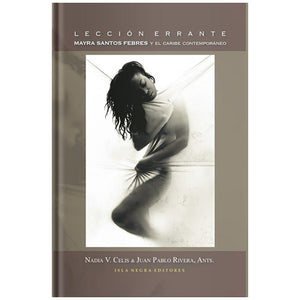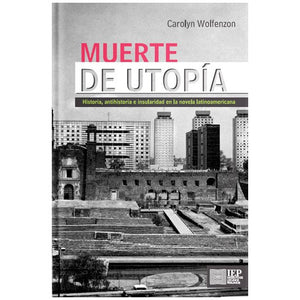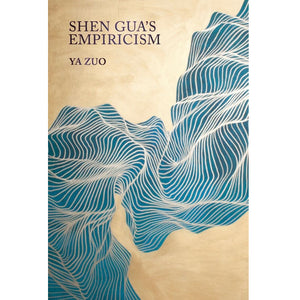{"id":6538892181593,"title":"Gendered Bodies — Cui","handle":"gendered-bodies-cui","description":"\u003cp\u003e\u003cstrong\u003eBy Shuqin Cui, \u003ca href=\"https:\/\/www.bowdoin.edu\/profiles\/faculty\/scui2\/index.html\" title=\"Shuqin Cui faculty profile\"\u003eBowdoin Professor of Asian Studies and Cinema Studies\u003c\/a\u003e\u003c\/strong\u003e\u003c\/p\u003e\n\u003cp\u003eThis book introduces readers to women's visual art in contemporary China by examining how the visual process of gendering reshapes understandings of historiography, sexuality, pain, and space. When artists take the body as the subject of female experience and the medium of aesthetic experiment, they reveal a wealth of noncanonical approaches to art. The insertion of women's narratives into Chinese art history rewrites a historiography that has denied legitimacy to the woman artist. The gendering of sexuality reveals that the female body incites pleasure in women themselves, reversing the dynamic from woman as desired object to woman as desiring subject. The gendering of pain demonstrates that for those haunted by the sociopolitical past, the body can articulate traumatic memories and psychological torment. The gendering of space transforms the female body into an emblem of landscape devastation, remaps ruin aesthetics, and extends the politics of gender identity into cyberspace and virtual reality. The book presents a critical review of women's art in contemporary China in relation to art traditions, classical and contemporary. Inscribing the female body into art generates not only visual experimentation, but also interaction between local art\/cultural production and global perception. While artists may seek inspiration and exhibition space abroad, they often reject the (Western) label “feminist artist.”\u003c\/p\u003e\n\u003cp\u003e-From the publisher.\u003c\/p\u003e","published_at":"2021-03-03T15:01:20-05:00","created_at":"2021-03-03T15:00:03-05:00","vendor":"The Bowdoin Store","type":"Book","tags":["Art","Bowdoin Faculty","Non-Fiction"],"price":5299,"price_min":5299,"price_max":5299,"available":true,"price_varies":false,"compare_at_price":5500,"compare_at_price_min":5500,"compare_at_price_max":5500,"compare_at_price_varies":false,"variants":[{"id":39256665817177,"title":"Default Title","option1":"Default Title","option2":null,"option3":null,"sku":"WBF283-Cui","requires_shipping":true,"taxable":true,"featured_image":null,"available":true,"name":"Gendered Bodies — Cui","public_title":null,"options":["Default Title"],"price":5299,"weight":0,"compare_at_price":5500,"inventory_quantity":1,"inventory_management":"shopify","inventory_policy":"deny","barcode":"9780824840037","requires_selling_plan":false,"selling_plan_allocations":[]}],"images":["\/\/store.bowdoin.edu\/cdn\/shop\/products\/wbf283-cui-gendered.jpg?v=1614802570"],"featured_image":"\/\/store.bowdoin.edu\/cdn\/shop\/products\/wbf283-cui-gendered.jpg?v=1614802570","options":["Title"],"media":[{"alt":"Gendered Bodies by Shuqin Cui","id":20239877701721,"position":1,"preview_image":{"aspect_ratio":1.0,"height":552,"width":552,"src":"\/\/store.bowdoin.edu\/cdn\/shop\/products\/wbf283-cui-gendered.jpg?v=1614802570"},"aspect_ratio":1.0,"height":552,"media_type":"image","src":"\/\/store.bowdoin.edu\/cdn\/shop\/products\/wbf283-cui-gendered.jpg?v=1614802570","width":552}],"requires_selling_plan":false,"selling_plan_groups":[],"content":"\u003cp\u003e\u003cstrong\u003eBy Shuqin Cui, \u003ca href=\"https:\/\/www.bowdoin.edu\/profiles\/faculty\/scui2\/index.html\" title=\"Shuqin Cui faculty profile\"\u003eBowdoin Professor of Asian Studies and Cinema Studies\u003c\/a\u003e\u003c\/strong\u003e\u003c\/p\u003e\n\u003cp\u003eThis book introduces readers to women's visual art in contemporary China by examining how the visual process of gendering reshapes understandings of historiography, sexuality, pain, and space. When artists take the body as the subject of female experience and the medium of aesthetic experiment, they reveal a wealth of noncanonical approaches to art. The insertion of women's narratives into Chinese art history rewrites a historiography that has denied legitimacy to the woman artist. The gendering of sexuality reveals that the female body incites pleasure in women themselves, reversing the dynamic from woman as desired object to woman as desiring subject. The gendering of pain demonstrates that for those haunted by the sociopolitical past, the body can articulate traumatic memories and psychological torment. The gendering of space transforms the female body into an emblem of landscape devastation, remaps ruin aesthetics, and extends the politics of gender identity into cyberspace and virtual reality. The book presents a critical review of women's art in contemporary China in relation to art traditions, classical and contemporary. Inscribing the female body into art generates not only visual experimentation, but also interaction between local art\/cultural production and global perception. While artists may seek inspiration and exhibition space abroad, they often reject the (Western) label “feminist artist.”\u003c\/p\u003e\n\u003cp\u003e-From the publisher.\u003c\/p\u003e"}
Gendered Bodies — Cui
Related Products
Sabor Judío — Boyle
$40.00
Lección Errante — Celis
$26.00
I, Grape — Clarke
$17.00
Shen Gua’s Empiricism — Zuo
$49.95












